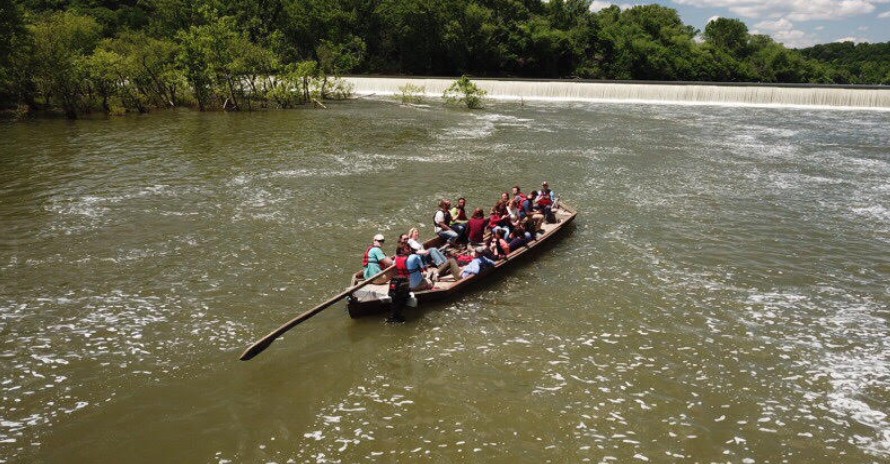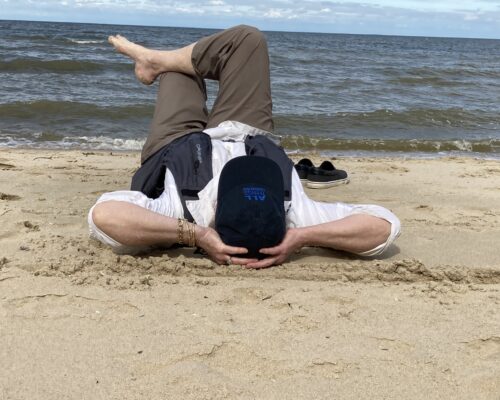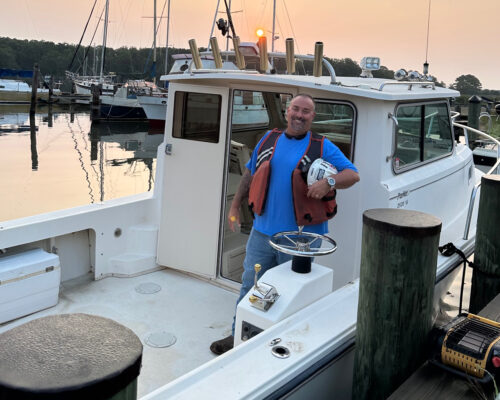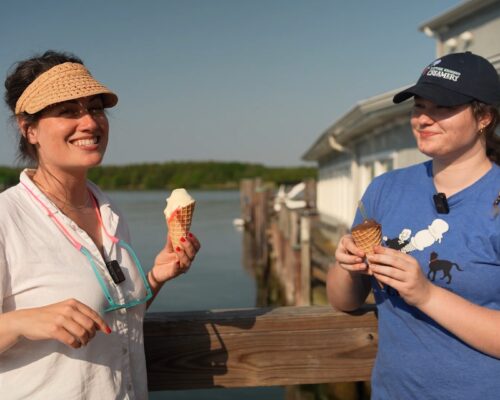The rugged, lovely workboats of the Chesapeake region have rightly taken on iconic status. Today we celebrate the skipjack as Maryland’s state boat and the deadrise as Virginia’s. Buyboats have gained recent and well-deserved notoriety. Less celebrated, though, are the batteaux that developed on the shallow, rocky upper James River. At the dawn of the United States, from 1775 to 1840, some 500 of these boats hauled passengers and freight down to Richmond, when roadways were rough and dangerous and railroads were not yet established. Like skipjacks and deadrises, the James River batteaux were tough and, in their way, lovely, because they fitted their waters effectively to satisfy the transport needs of their times.
Curious about these lesser-known crafts of the upper Chesapeake watershed? Today you can take a ride on one on the James River at Lynchburg, courtesy of James River Adventures, a subsidiary of the James River Association (JRA). But first, some historical context.
Lynchburg is today the bustling 11th-largest city in Virginia (population 79,009 in the 2020 census). Like many others, it exists because of its waterside location. Monacan Indians have lived along this part of the James for 10,000 years. In the 1740s, a family named Lynch established a ferry across the river to connect land to the north with a road to New London, a then thriving town to the south in what is now Bedford County.
In this time of American western expansion, the area was important because two important roads connected nearby. The Great Wagon Road ran north-south along the Appalachian ridges, while the Wilderness Road led west, just as the modern highways I-81 and I-64 do today. In 1757, the young and enterprising John Lynch assumed control of the family’s ferry and prospered. At his request in 1786, the Virginia General Assembly granted a charter to establish a village on a hilly plot of land he owned on the south side of the river. The resulting Lynchburg soon became an important inland port for the shipment of tobacco and other crops 130 miles down to the head of the tide in Richmond, with commercial goods returning.
This part of the James, though, is shallow and rocky. Forward-thinking Virginians, including George Washington and Thomas Jefferson, were eager to see the river “improved” for navigation. In 1775, brothers Anthony and Benjamin Rucker built the first batteau. It was about 58 feet long, with a beam of 6 feet topside, 4 feet on its flat bottom, and a pointed bow and stern. Propulsion and maneuvering came from river currents and long poles plied by strong men, with steerage by long sweeps (oars) set in notches, bow and stern. Between 1775 and 1840, skilled, hard-working, and courageous crews (largely slaves and black freedmen) plied those 500 batteaux up and down the river at all seasons.
Every Tuesday in August, James River Adventures welcomes you aboard its period-accurate replica batteau for one- or three-hour tours. It’s a great way to experience this part of the river, where the city of Lynchburg, surrounding jurisdictions, and JRA have made valuable strides in restoring the health of the waters. See you on the river!




